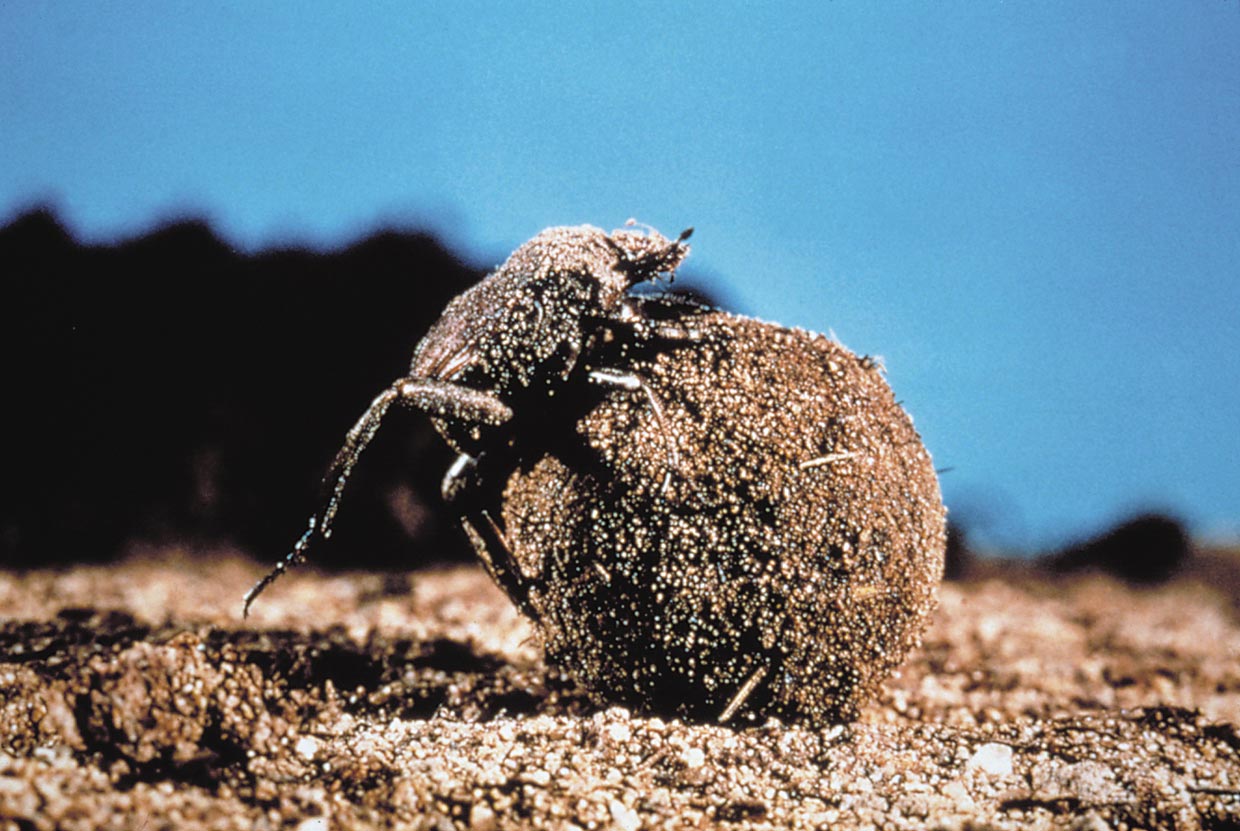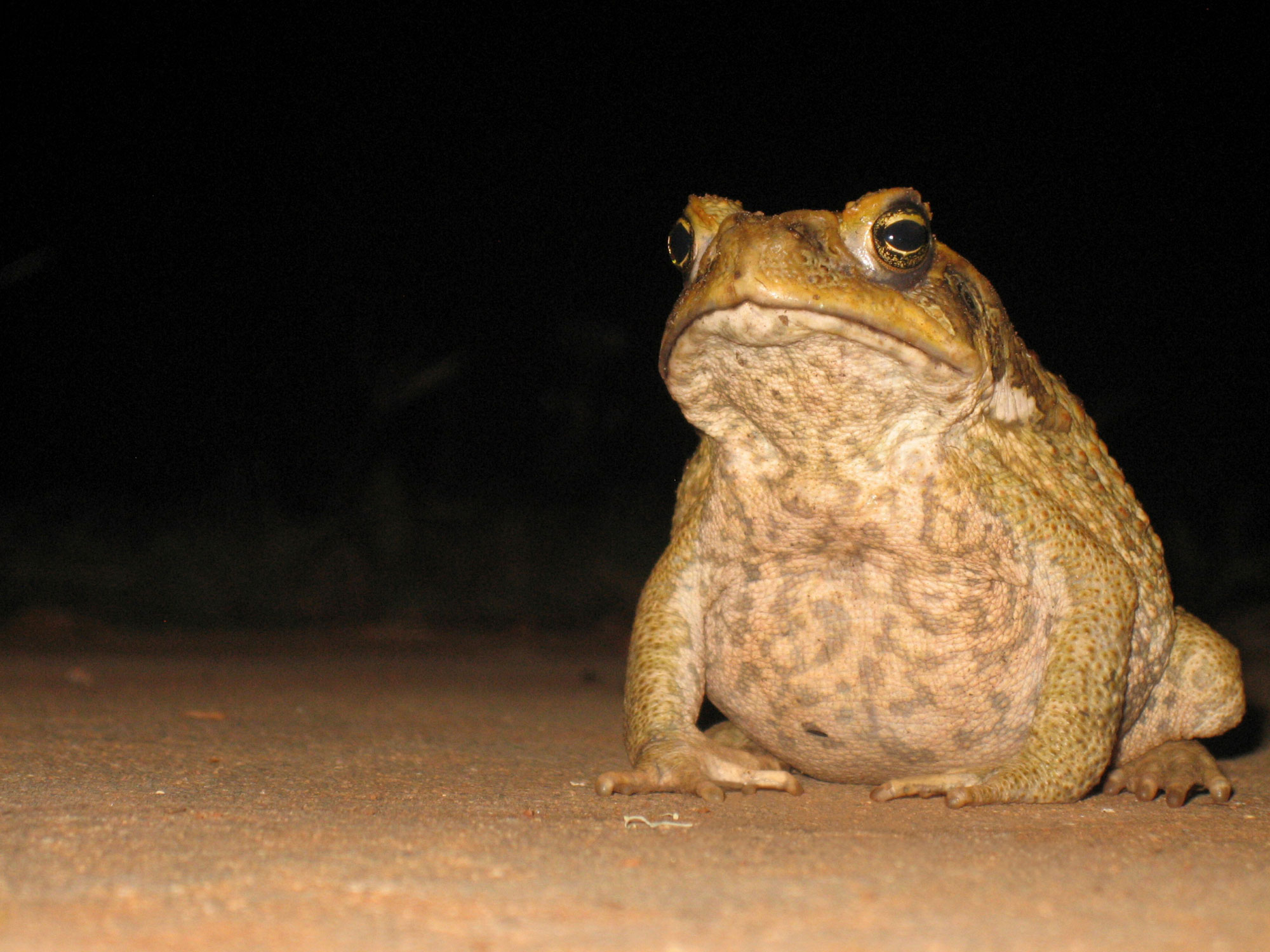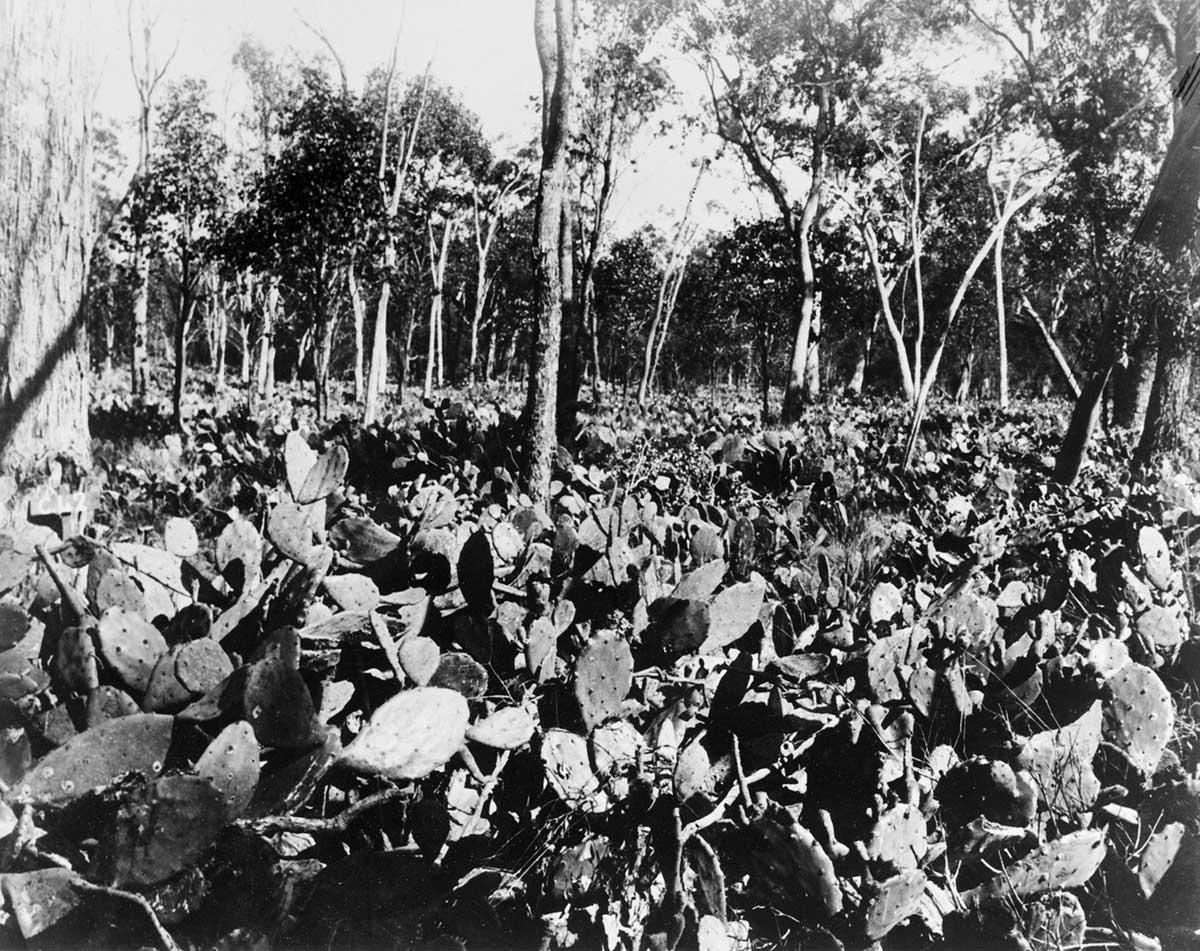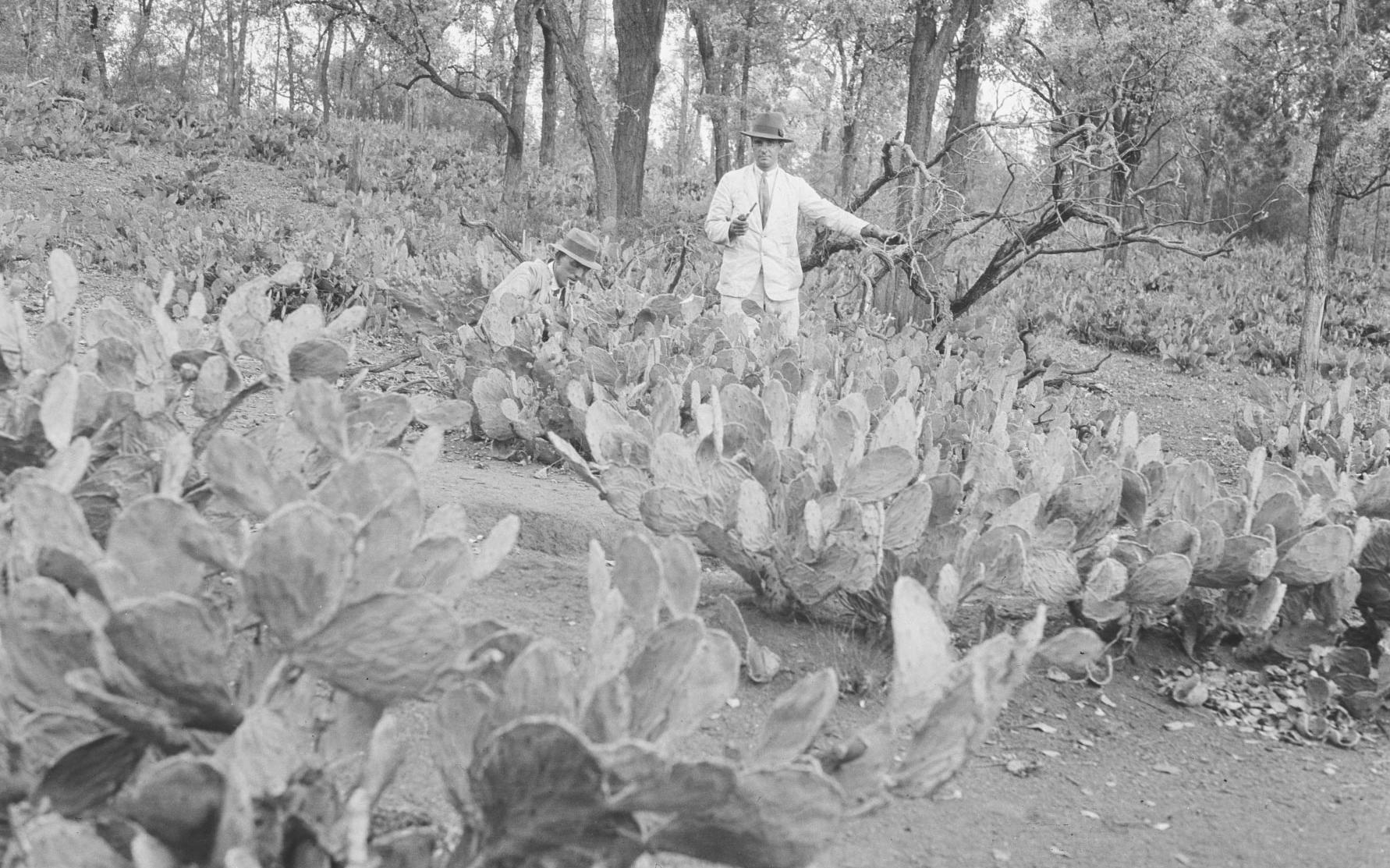Learning module:
Landforms and landscapes Defining Moments
Introduced species
2.2 A carpet of grey across the nation — releasing rabbits
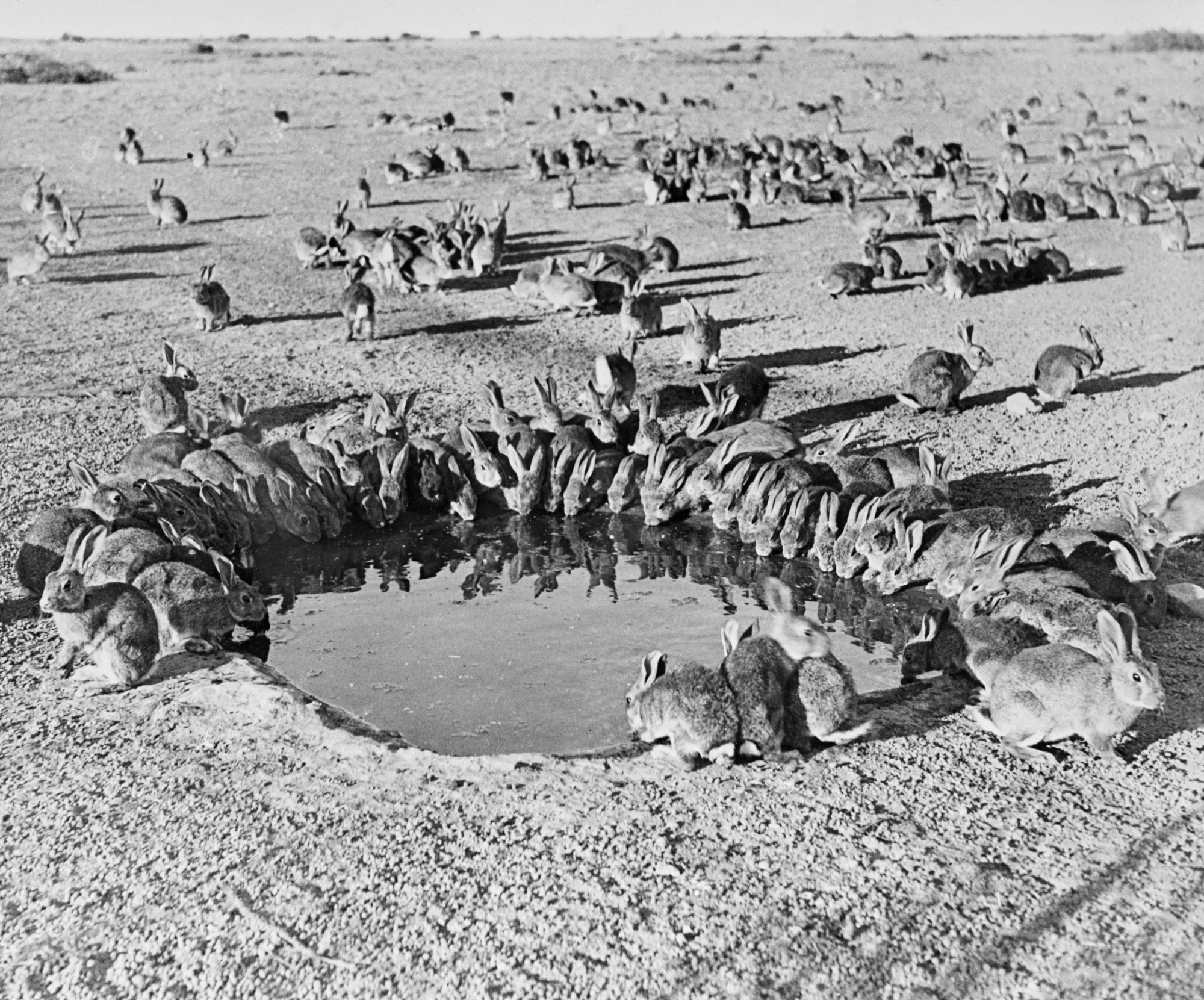
Many people choose the landscapes where they want to live because they find those places suit them perfectly.
Others, however, believe that there is something missing or lacking in the places they live, and try to change them.
One example of this is the introduction of rabbits. Rabbits are not native to Australia. They arrived with the First Fleet in 1788, and were released into the wild 70 years later.
1. Imagine that you are in an area where there are no rabbits. You learn that somebody proposes to introduce them to the area and let them run wild.
a) Why might some people think that rabbits will improve the landscape?
b) Why might other people think that rabbits are undesirable in that area?
Now see what happened when rabbits were introduced into one place in Australia.
Look at this photograph. It shows an area of land with a fence dividing it. The area on the left is A. The area on the right is B.
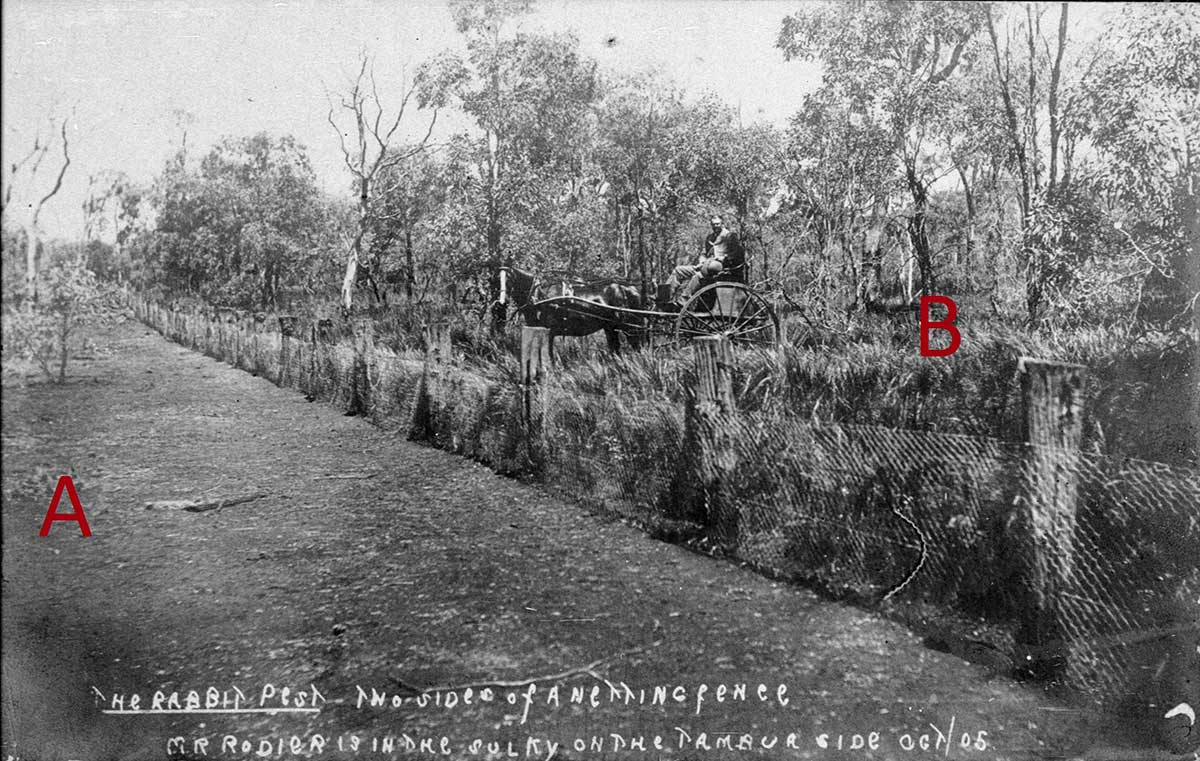
2. Which of these best describes the two landscapes?
The photograph shows some of the impact of rabbits on the environment. The rabbits have been in area A, and have eaten all the grass. The rabbits were not able to get past the fence, so you can see that the environment in area B is much healthier.
Here are some other ways that rabbits could have an influence on this area.
3. Drag the explanation of each impact that rabbits have had into the box beside each word.
4. How many of these problems did you anticipate would happen when you answered question 1 earlier?
You can find out more by watching this film clip from 1949 about the ‘menace’ of rabbits:
If rabbits cause so much damage, why are there so many in Australia? Why did the people who introduced rabbits think that they would make an area more liveable?
Read the Defining Moment in Australian history: 1859 ‘They all ran wild’ — Rabbits introduced and answer the questions below
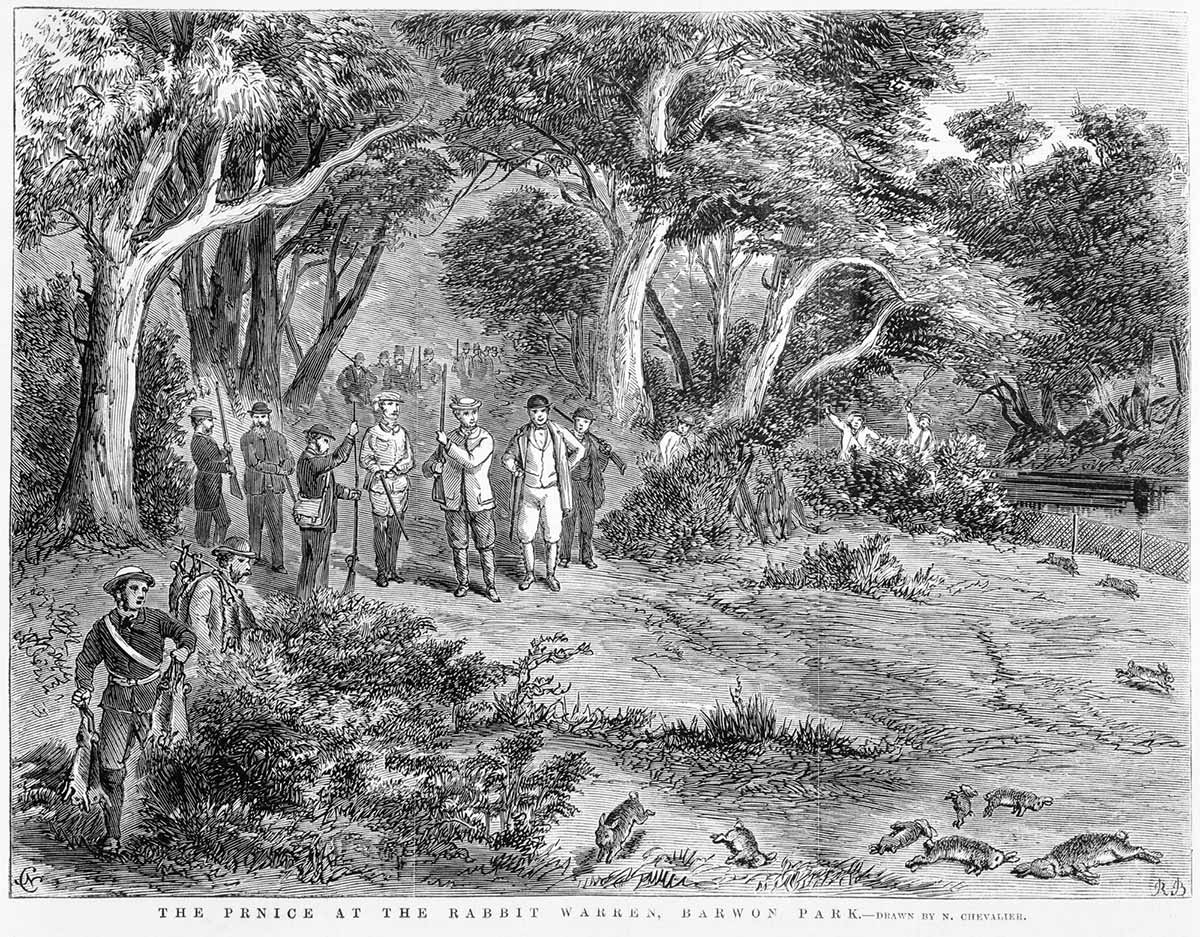
7. Look at the engraving above showing why the rabbits were first released in 1859. What is the reason shown by the artist?
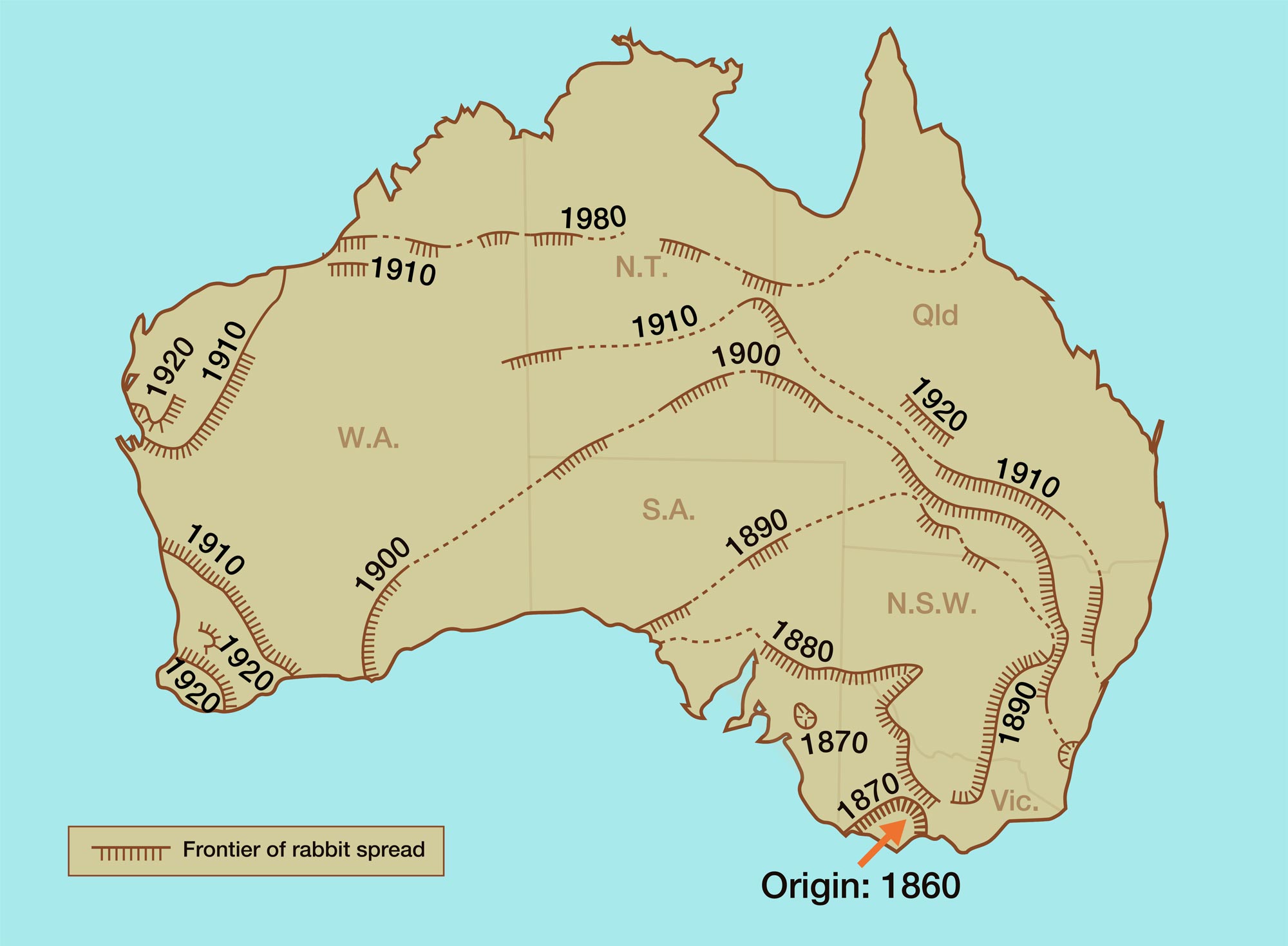
9. Look at this map showing how rabbits spread throughout Australia.
10. Explain at least three reasons why rabbits are a problem in Australia.
12. Here are some pictures of different rabbit controls. Drag the appropriate label under each picture.
13. There are two diseases mentioned in the Defining Moment that have been used to try to reduce the rabbit population in Australia. Match the names of the two diseases to their correct definition and date.
Another way of trying to control the rabbits was by building a rabbit-proof fence to stop them spreading from one side to the other.
14. According to the Defining Moment, how long was the rabbit-proof fence in Western Australia?
Look at this cartoon:
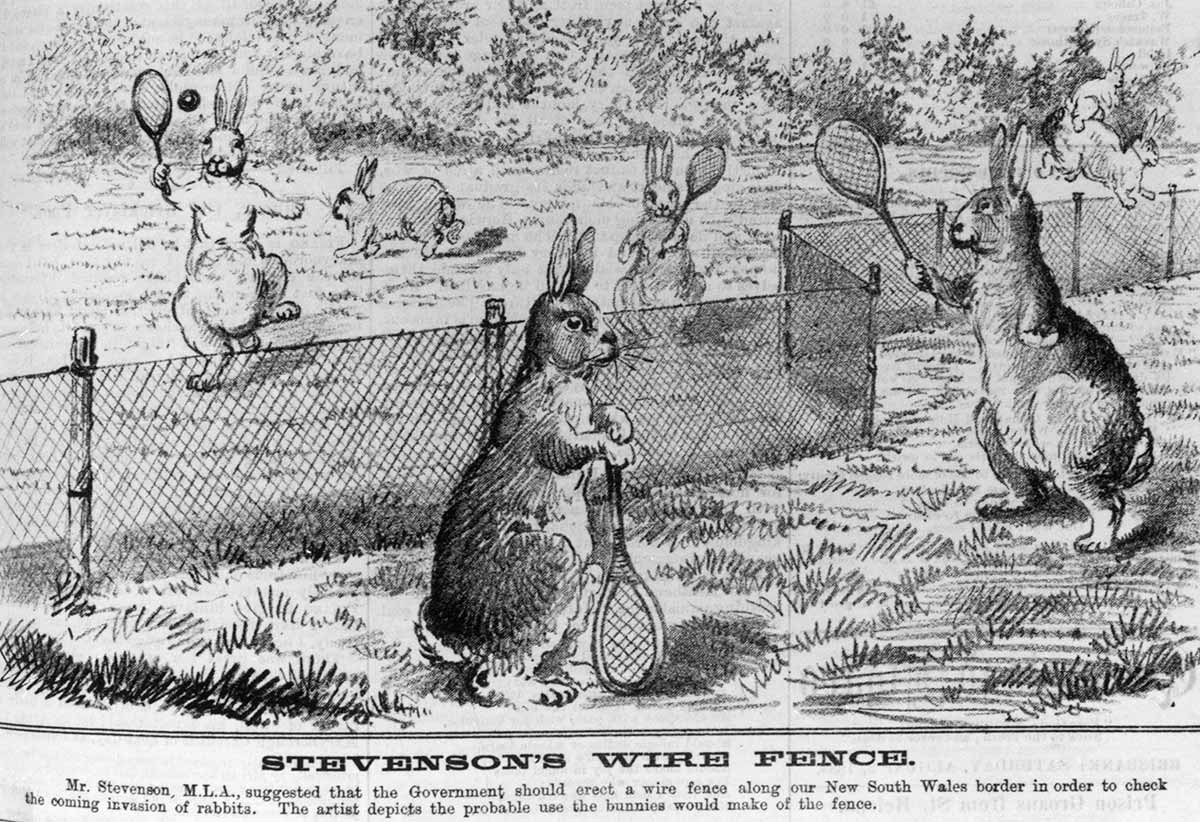
15. Work out what it shows, then decide on what the message of the cartoon is.
- What animals are in it?
- What they are doing?
- What is the net? Is it a normal tennis net or something else?
Conclusion
17. What does this case study help you understand about the way landscapes have been managed over time in Australia?
Images used in question 12:
Coiled spring steel rabbit trap. National Museum of Australia
Carmelo Mirabelli and companion after a rabbit hunt, likely taken in the 1950s. National Museum of Australia
Rabbit proof fence divides pasture, Victoria, 1963. National Archives of Australia A1200, L44185
Violet Abberton and a companion digging out rabbit burrows near Bathurst, New South Wales, 1920s. National Museum of Australia
Vial of liquid Rabbit Haemorrhagic Disease Virus suspension. The Centre for Invasive Species Solutions
Advertisement for Presto Rabbit Poison. Mimmo Cozzolino, from Symbols of Australia








